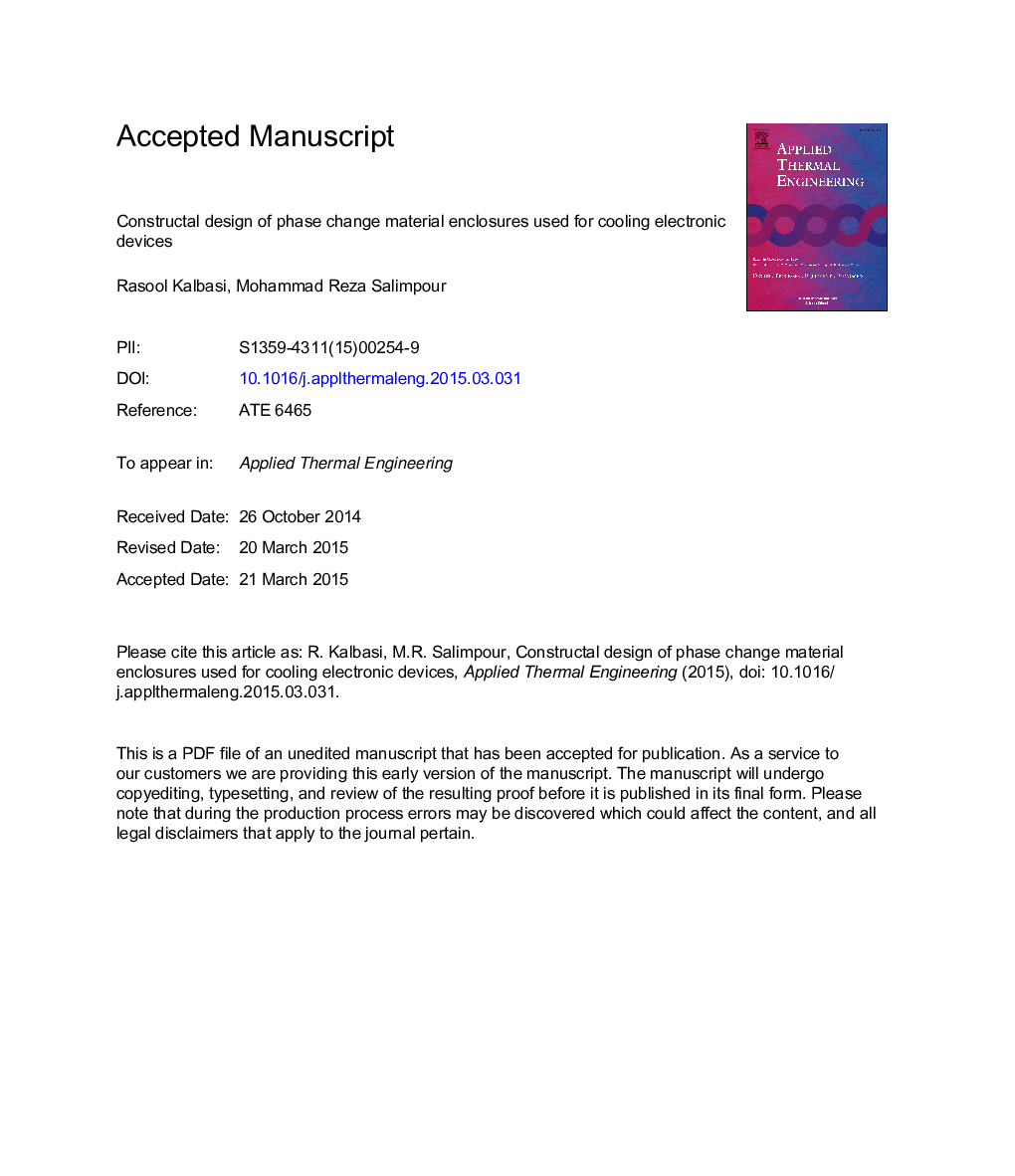| Article ID | Journal | Published Year | Pages | File Type |
|---|---|---|---|---|
| 645584 | Applied Thermal Engineering | 2015 | 31 Pages |
Abstract
Recent developments in cooling methods for portable electronic devices have heightened the need for using the large latent heat capacity of phase change materials (PCM). The aim of the present study is to evaluate the thermal characteristics of a PCM-based heat sink with high conductive materials. The solution is acquired as a procession of optimization stages which starts with the elemental area and proceeds toward the first assembly. Every optimization stage is the result of maximizing the safe operation time without allowing the electronics to reach the critical temperature. Primarily, the degrees of freedom and constrains were defined and then by changing the geometrical parameters, the target function which is the maximization of operation time, was optimized. Results show that the melting process in rectangular enclosures with vertical fins attached to the heated bottom surface can be affected by the contact surface between the fin and PCM and the convection of the melted PCM. For a rectangular enclosure with a constant area, it is better to use wider enclosure than the square and thin one. Also results indicate that the ratio of the vertical fin thickness to the horizontal one does not have a considerable effect on performance. By increasing the number of enclosures, the contact surface is raised, but the performance is not necessarily improved.
Related Topics
Physical Sciences and Engineering
Chemical Engineering
Fluid Flow and Transfer Processes
Authors
Rasool Kalbasi, Mohammad Reza Salimpour,
